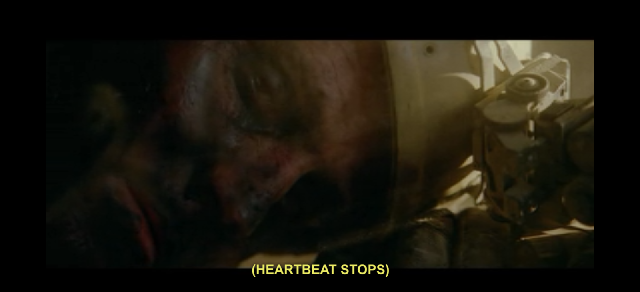Steady breathing
[ by Charles Cameron — something as simple as spirit, important to special ops & law enforcement — an open question ]
.
Let’s begin with a quote from Buddhist monk Thich Nhat Hanh, The Miracle of Mindfulness: An Introduction to the Practice of Meditation:
Breath is the bridge which connects life to consciousness, which unites your body to your thoughts. Whenever your mind becomes scattered, use your breath as the means to take hold of your mind again.
That’s about as basic as you can get. Breath begins with your first gasp (in-spiration) and runs like a silk thread through your life till your last sigh (ex-spiration) and it’s all spirit — which turns out to be beyond the mind-body dichotomy, and a balancing factor for both.
**
Fast forward.
Let’s turn from breath — spiritus in Latin, as in spiritus ubi vult spirat, “breath blows where it wants to”, John 3.8 — to its specific application in “combat breathing” as illustrated by the still from the National Geographic movie Seal Team Six: the Raid on Osama bin Laden at the head of this post.
In “Fear Factor”, his review of Amanda Ripley’s fascinating-sounding The Unthinkable: Who Survives When Disaster Strikes, published in City Journal 21 June 2008, blog-friend John Robb writes:
… in complex disasters, the biological-fear response can slow thinking so severely that it can kill you.
We can counter fear, however. The best method, FBI trainers say, is to get control of your breathing. “Combat breathing” is a simple variant on Lamaze or yoga training — breathe in four counts, hold four counts, exhale four counts, and repeat. It works because breathing is a combination of the somatic (which we control) and the autonomic (which we can’t easily control) nervous systems. Regulation of the autonomic system deescalates the biological-fear response and returns our higher-level brain functions to full capacity. So one of the best ways you can prepare yourself to overcome fear in a crisis is as simple as a meditation, Lamaze, or yoga class.
I find it fascinating and also sensible that yogic / meditative techniques are now taught by members of the special ops and law enforcement communities:
Training under stress also will help officers learn to control their arousal level. As their physiological agitation escalates, so might their susceptibility to perceptual and memory distortions. Thus, learning to control arousal level can help reduce distortions. Therefore, officers should receive training in and regularly practice ways to control arousal levels in high-stress situations. One process, the combat breathing technique, has proven highly effective in this area.
Alexis Artwohl, “Perceptual and memory distortion during officer-involved shootings”, FBI Law Enforcement Bulletin, Oct, 2002
This reminds me of Richard Strozzi Heckler’s In Search of the Warrior Spirit: Teaching Awareness Disciplines to the Green Berets, now in its fourth edition.
**
Breath, spirit, breathing — it’s …
… “right under our noses”, all too easily overlooked, and heart-stoppingly, mind-blowingly important.
Let’s talk a bit about it…




